A large part of my thesis research this fall was interviewing fifty subject-matter experts from a broad range of disciplines. These experts primarily fell into the categories of Creatives, Politicals, and Facilitators. Categorizing allowed me to tailor my questions, as shown in my interview guide below.
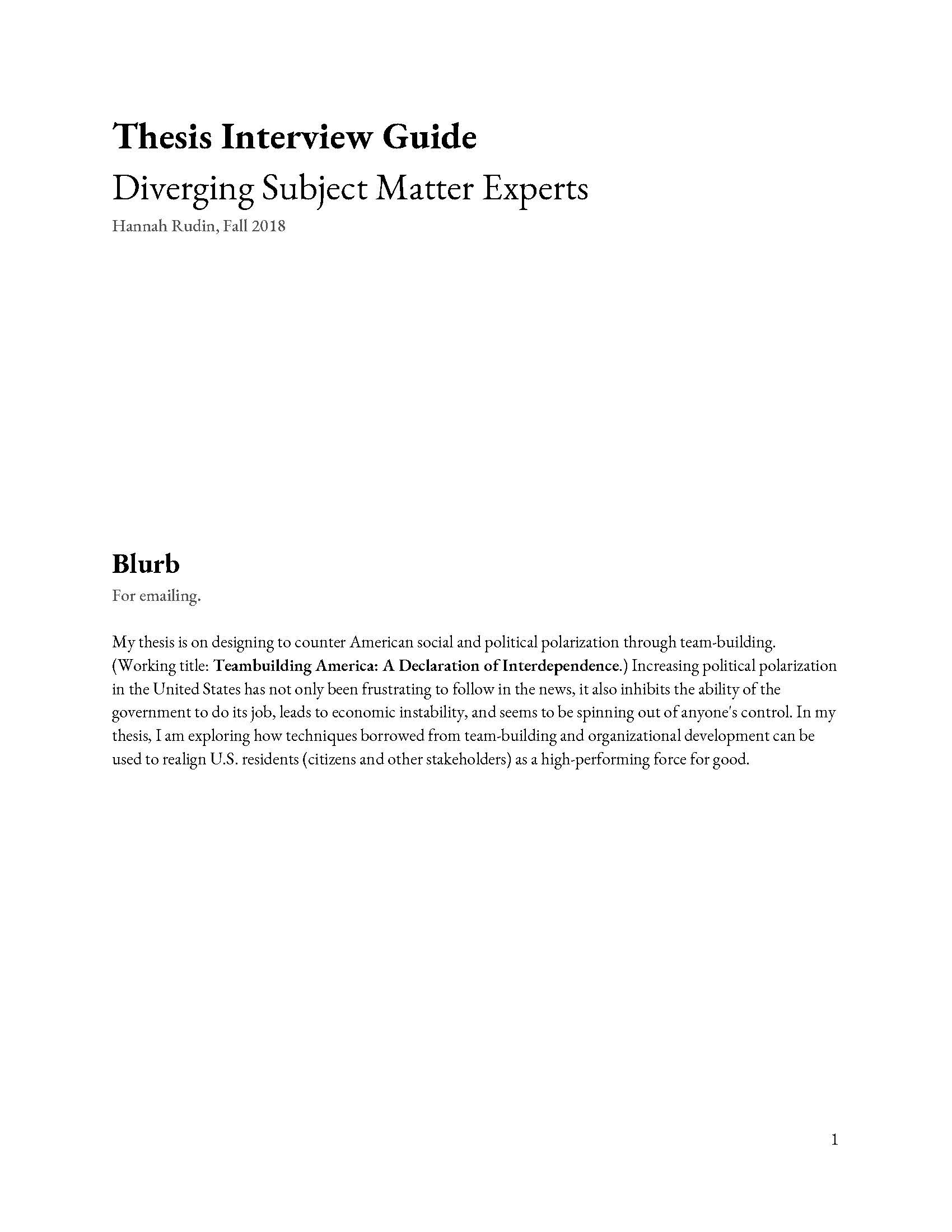
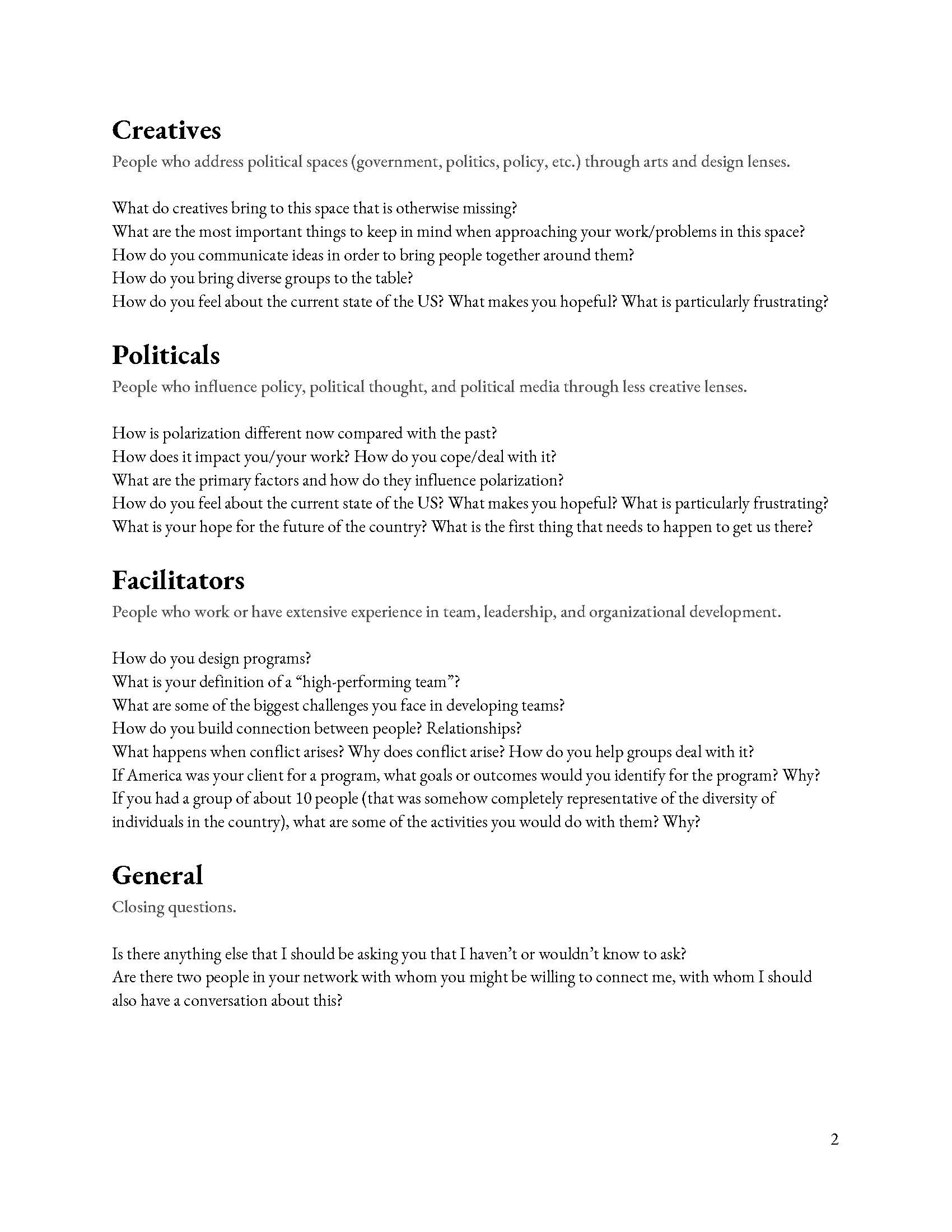
Synthesis
The interviews left me with a lot of valuable information to unpack. Unfortunately, due to the nature of the sprint, there was little time to do this throughout the interview month, so I still had a lot to synthesize at the end.
I also noticed that, despite differentiating my questions, there was still a lot of overlap in the responses from the three categories of experts. I decided to do a cumulative synthesis of all of the interviews together, and I needed to figure out how to do it.
The purpose of this process was to distill patterns and insights from my conversations with my subject-matter experts. Grouping the notes to find trends helped me to also identify the most common points and map them to my empirical research, as well as assess the scope of knowledge of my interviewees and find potential weak spots.
As shown above, the category of “people” was a huge bucket. It captured statements describing a spectrum of levels of personal interactions, which I split into four categories in order of scale: self (intrapersonal), interpersonal (person-to-person), communal, and contextual (person-to-context).
The second-largest grouping consisted of statements about the state of the nation and how my thesis might apply. This felt like a looser grouping, but I tried to arrange it roughly along a spectrum from theoretical/hypothetical statements to practical/factual statements.
Next was the leadership and facilitation category, where most of my facilitator insights fell. This was distinct from the people category because it seemed more about actions that facilitators and leaders can take to help teams achieve their goals. The people category was more about inherent qualities of various types of interactions.
Similar to the leadership category, but big enough and distinct enough to stand alone, was the team-building activities and goals category. This was focused around actions that teams can take with or without a facilitator, as well as defining of what makes a high-performing team.
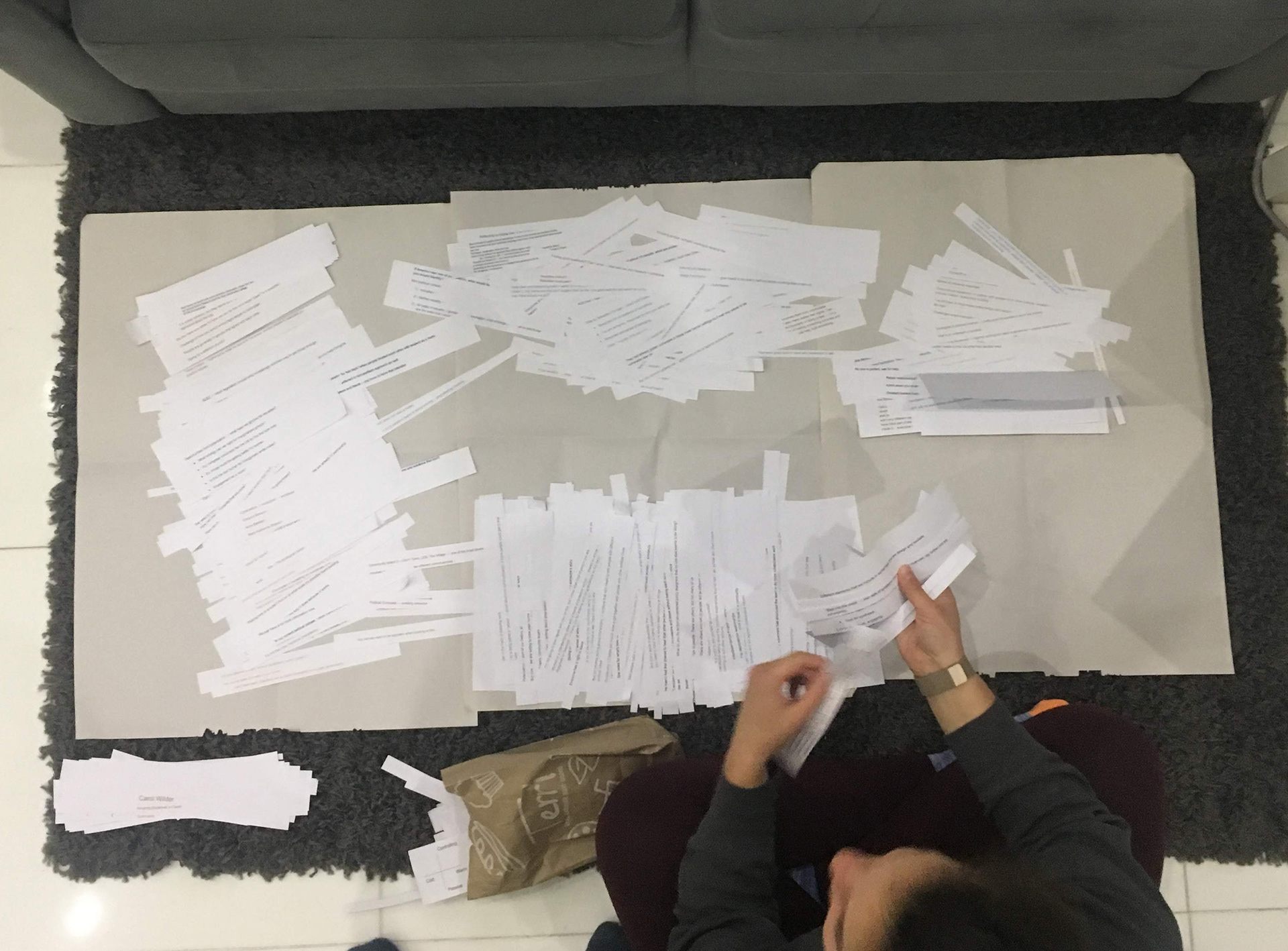
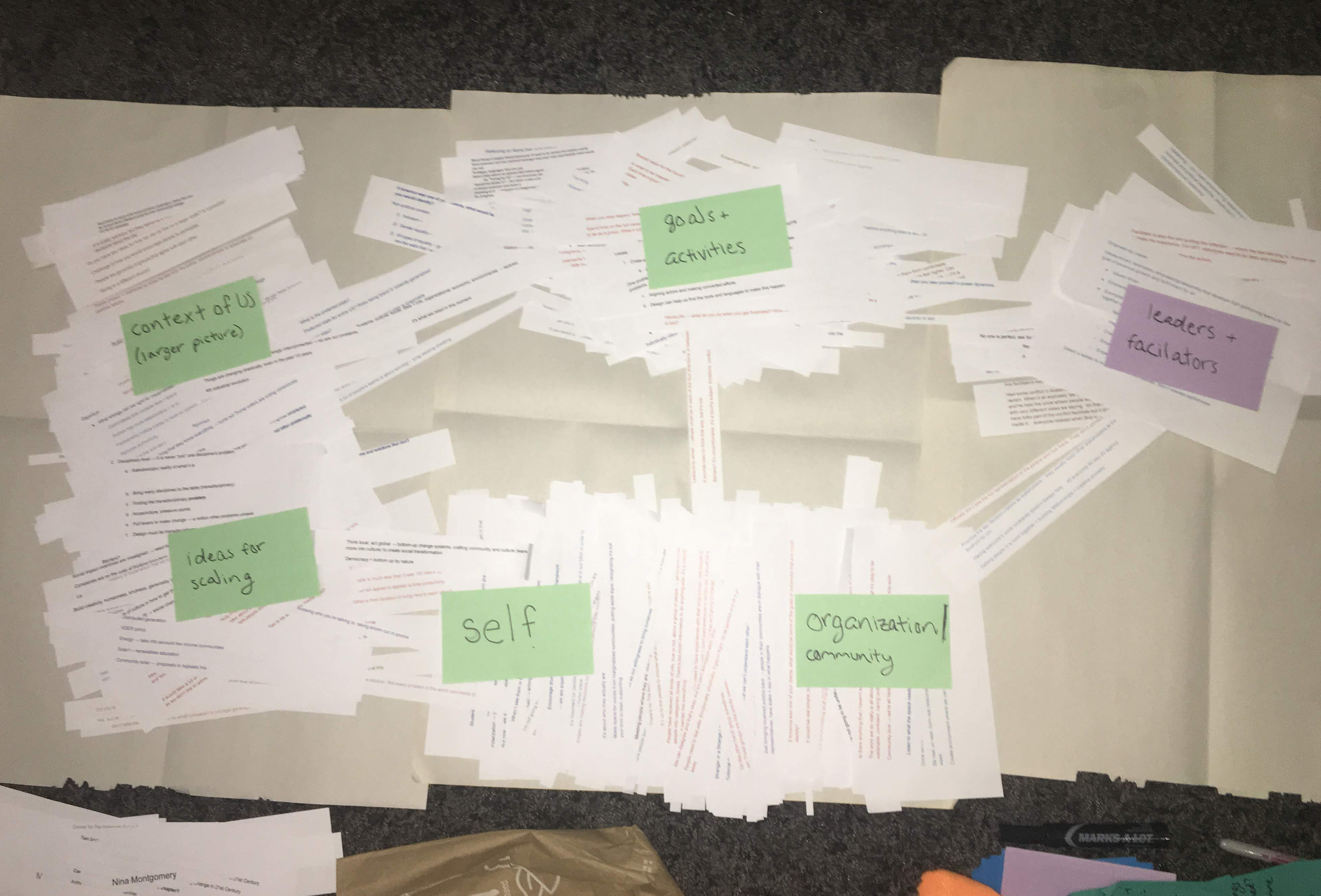
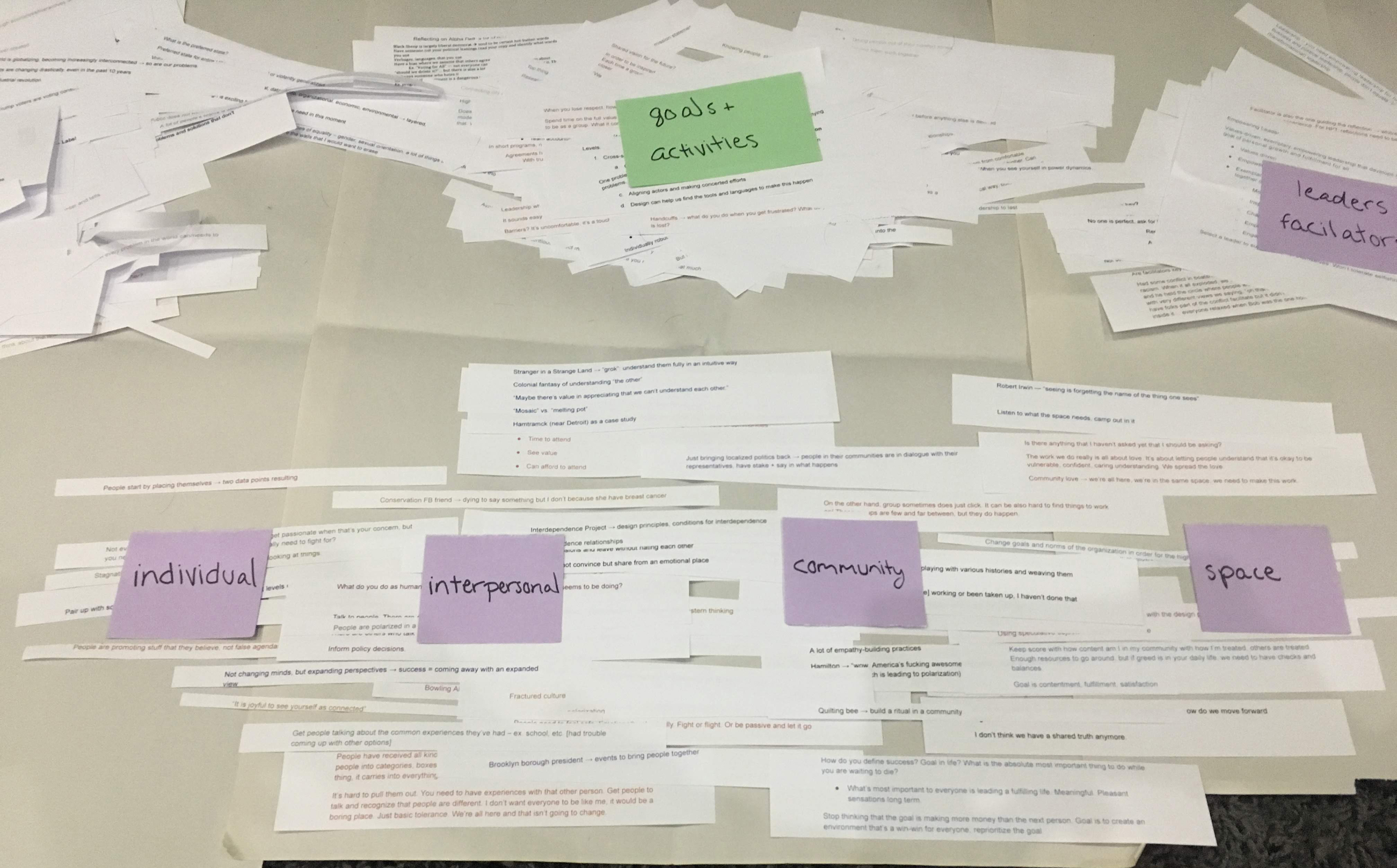
Synthesizing fifty interviews conducted over the course of four weeks was no small task. There was a lot of data to unpack and it seemed like there was no simple way to do it. To start, I bought 2,400 post-it notes from Staples, then spent way too long thinking about how to approach the challenge. After two days of starting and stopping the process, I realized that the best course of action was action and decided to commit to the method of printing all of my interview notes, slicing them into chunks of information, and then grouping them on a large floor mat.
Further Synthesizing the People Category
Because the category of “people” in my initial affinity map was the largest and contained some breadcrumbs that I wanted to follow, I took some time to deconstruct it further into each of the four sections I had identified earlier: self, interpersonal, communal, and contextual. Within each of those sections, I did more grouping and was able to extract four to seven insights per category. These insights mostly offer opportunities for intervention, but there are too many for me to follow all of them. I hope to address each of the four main categories at least once over the course of my thesis, and will use the insights within those to make that happen.
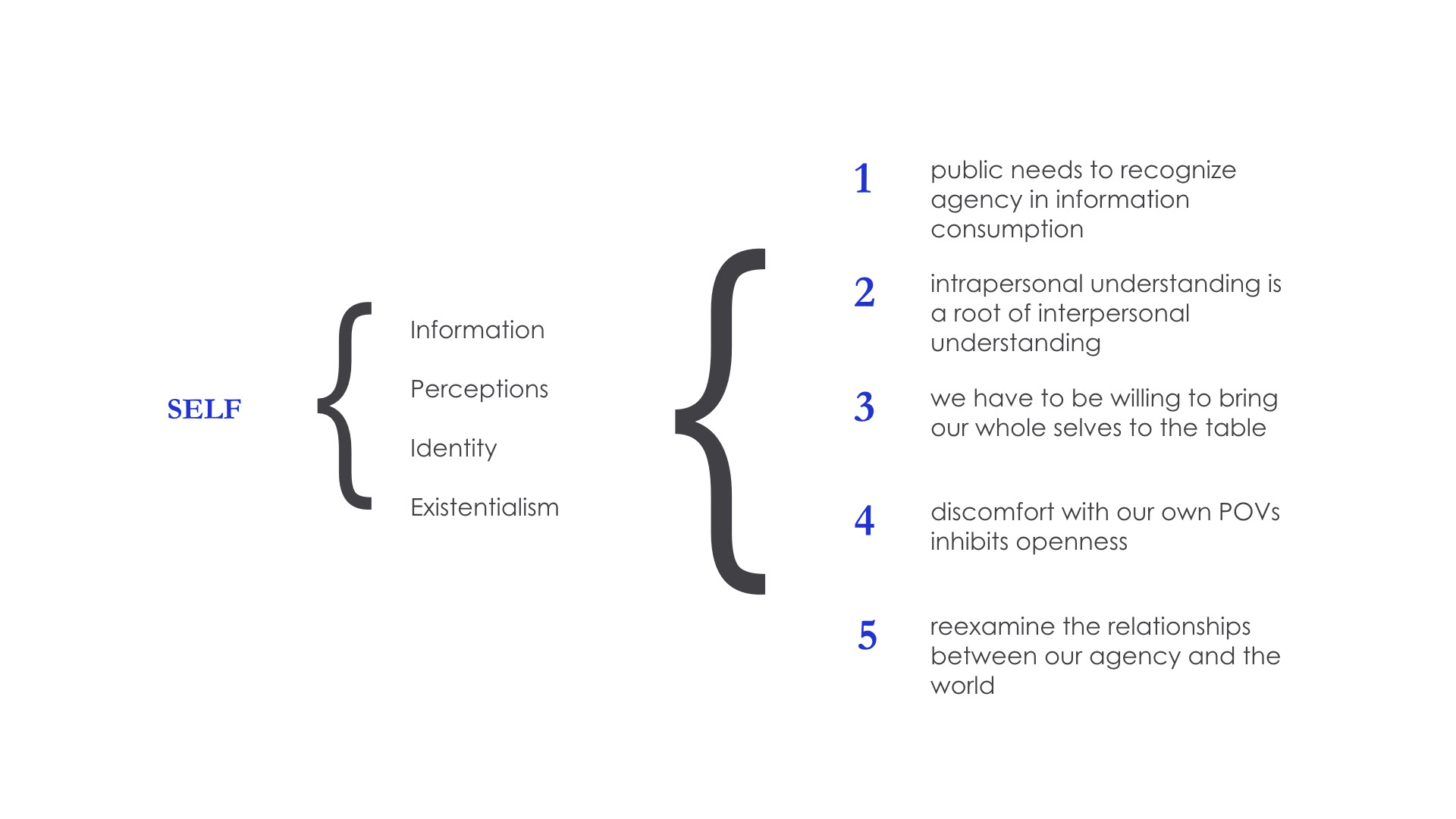
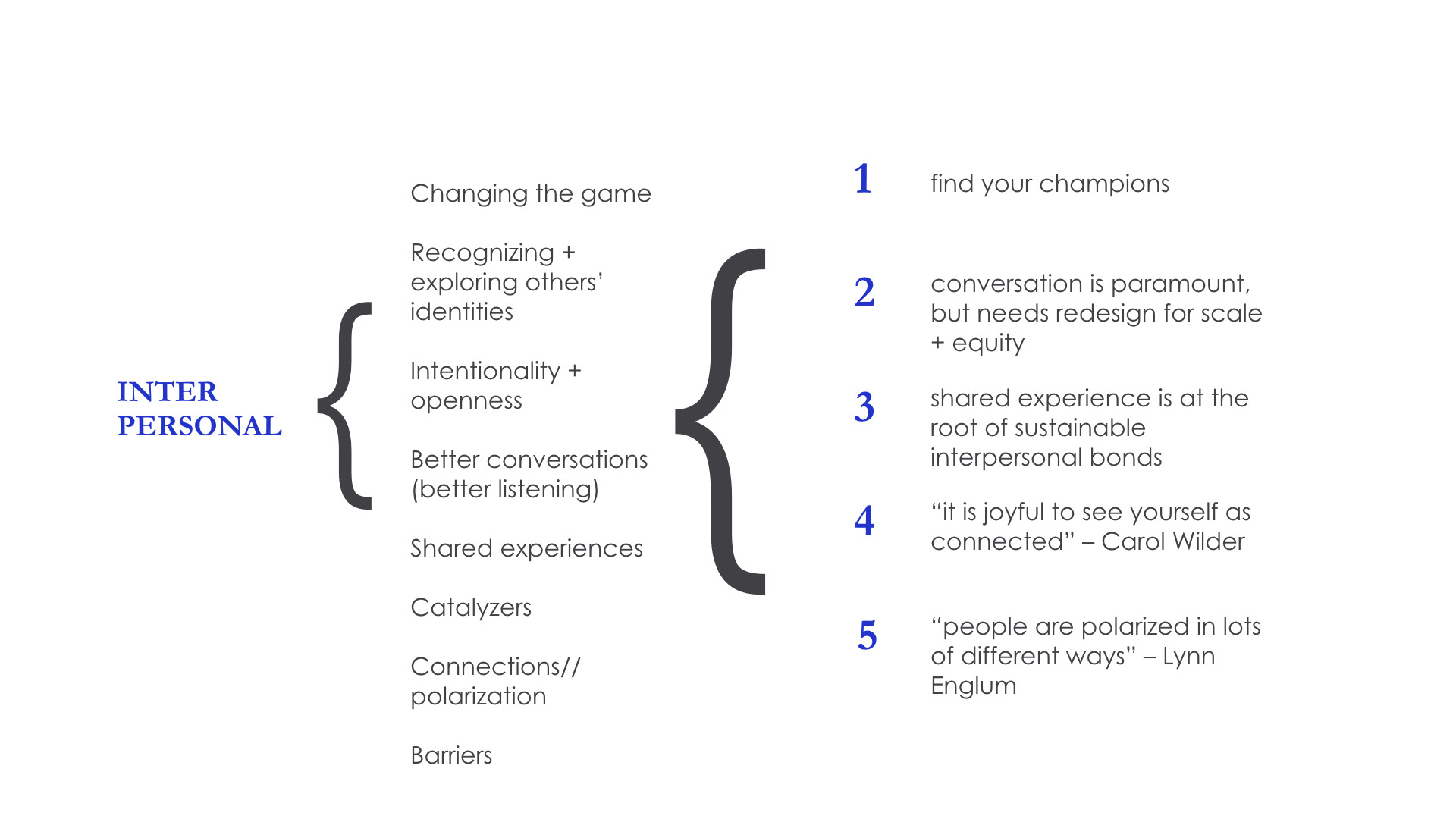
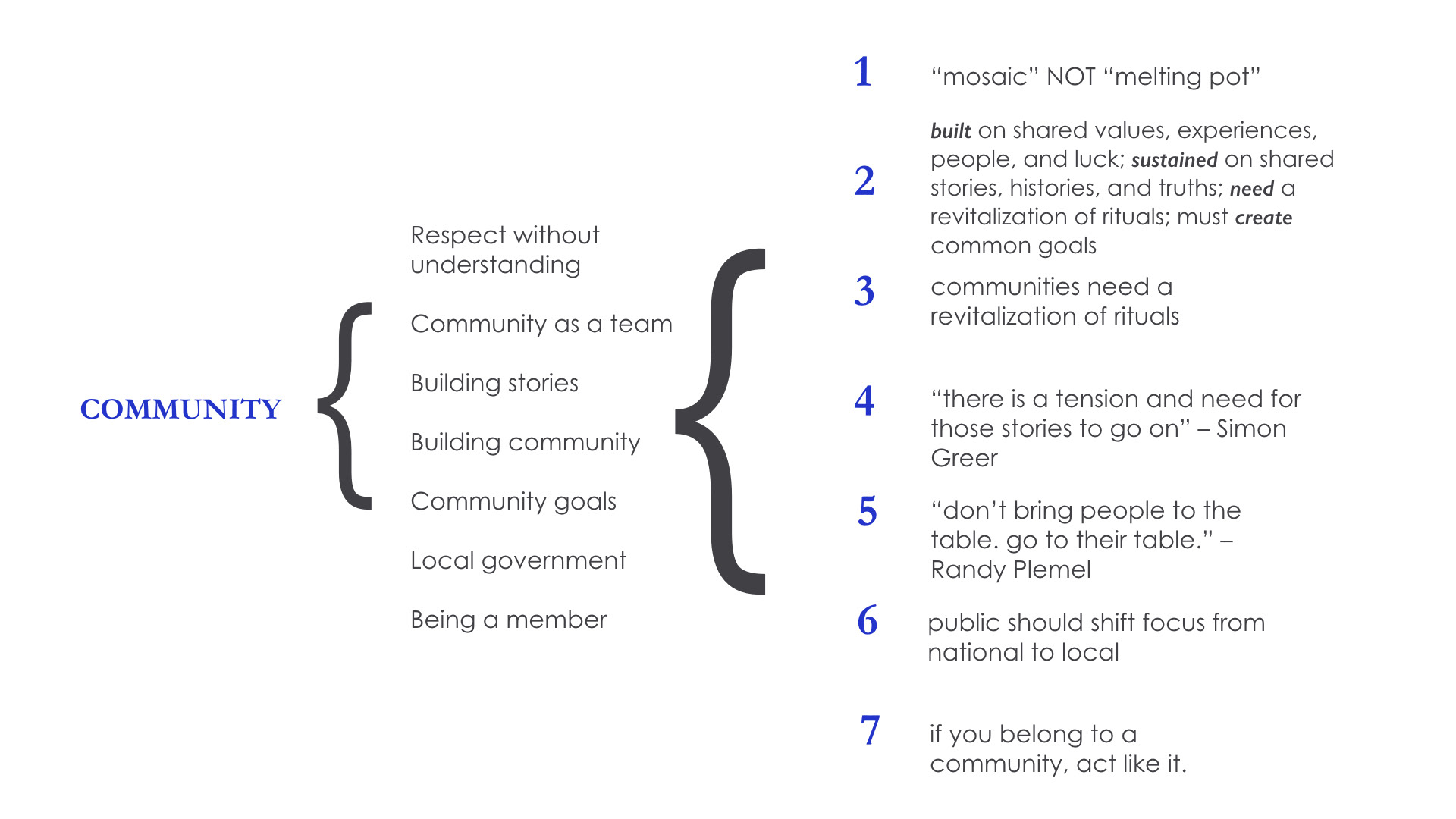
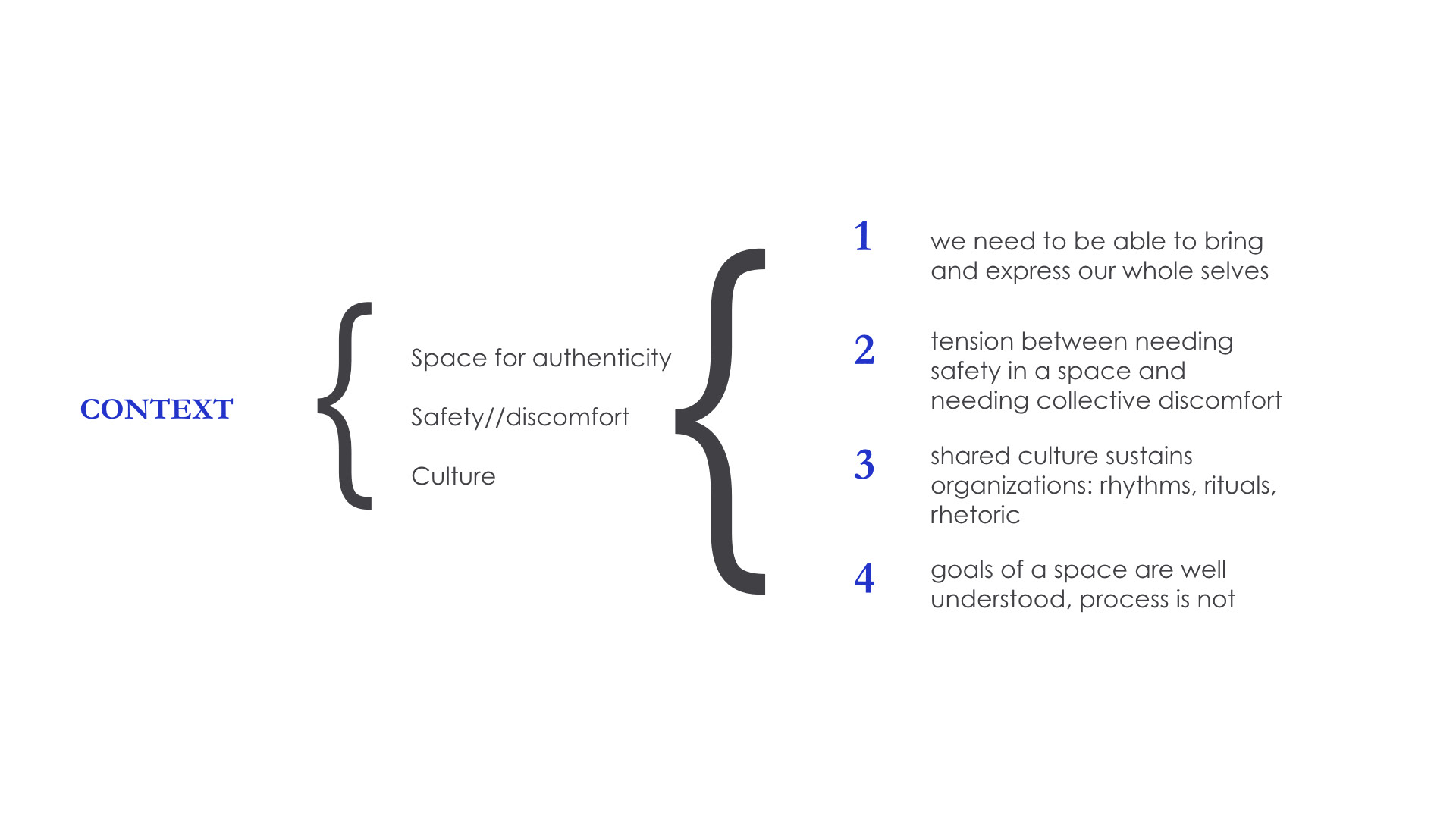
Teambuilding Synthesis
After the initial affinity map, I wanted to further deconstruct the facilitation/teambuilding and leadership buckets. Looking just at the notes from my teambuilding experts, I synthesized statements onto post-its and grouped them on a big chalkboard wall.
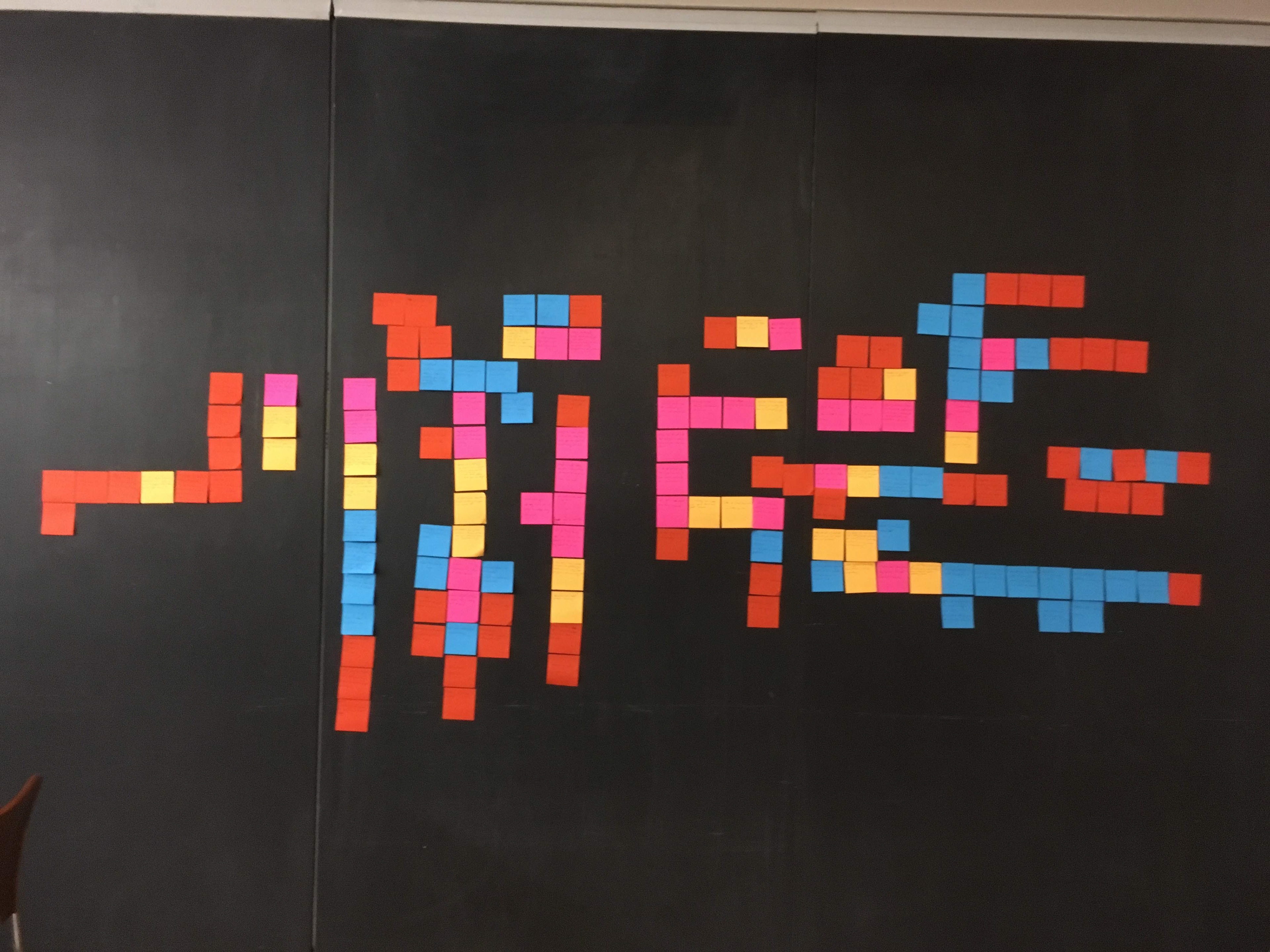
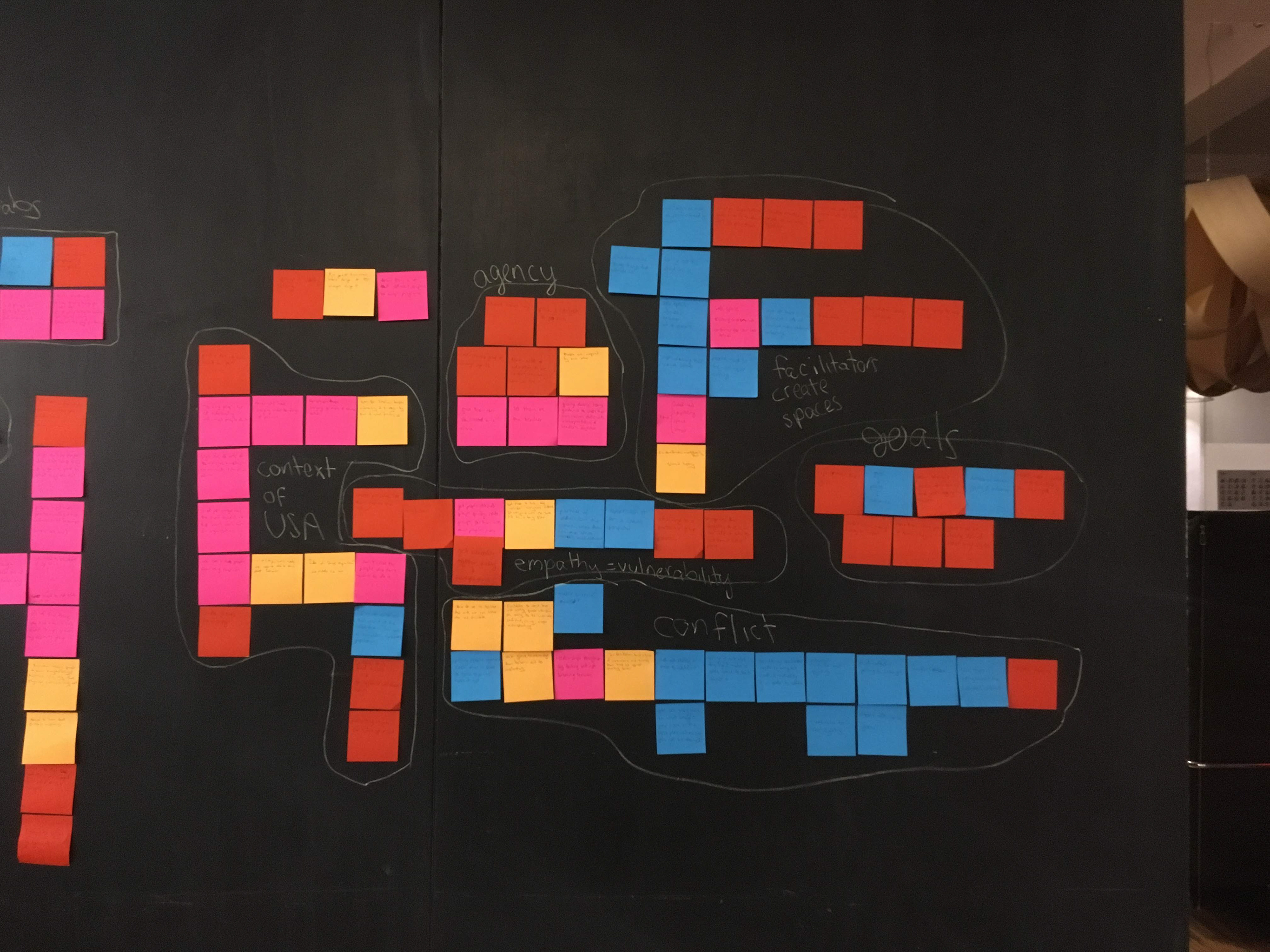

The number of different categories that came from this surprised me, as well as the patterns that emerged from some of those categories. Specifically, in the conflict resolution category, a strong insight emerged about the importance of creating a “full value contract,” not only before the conflict occurs, but even during and after the conflict. A full value contract (FVC) allows the team to lay out the values and behaviors they want to collectively hold, and come to consensus around those values.
The other pattern that particularly surprised and intrigued me emerged in the “space” category, referring to the environment that the facilitator needs to create or use to help the team develop. The fascinating part of this is that the space needs to be simultaneously comfortable and uncomfortable for every member of the team. It needs to be uncomfortable in order to elicit vulnerability and bring everyone to a similar level of social hierarchy, as well as disrupt their normal modes of operation. However, it needs to be comfortable for people to bring their full and authentic selves, have fun, have basic needs met (physical safety), and feel and think deeply.